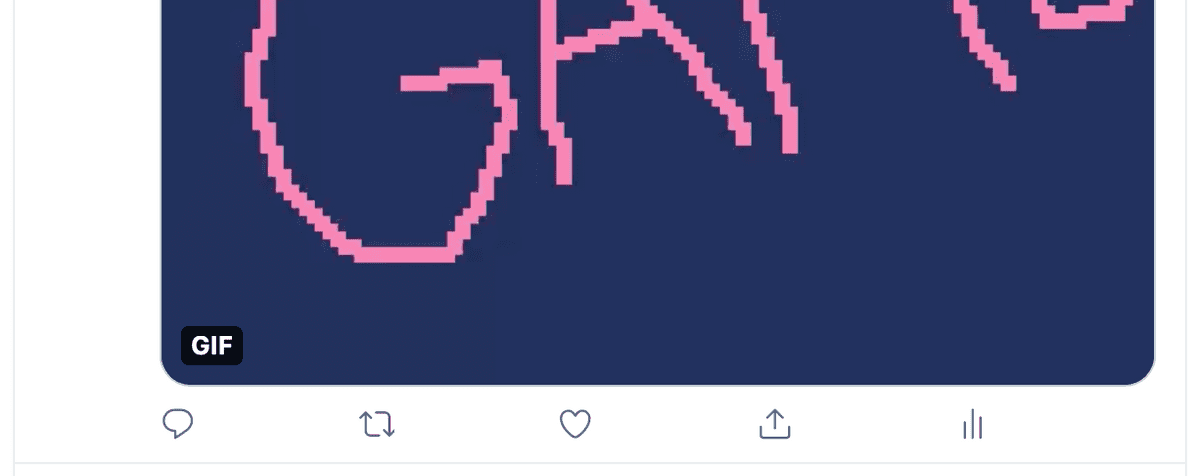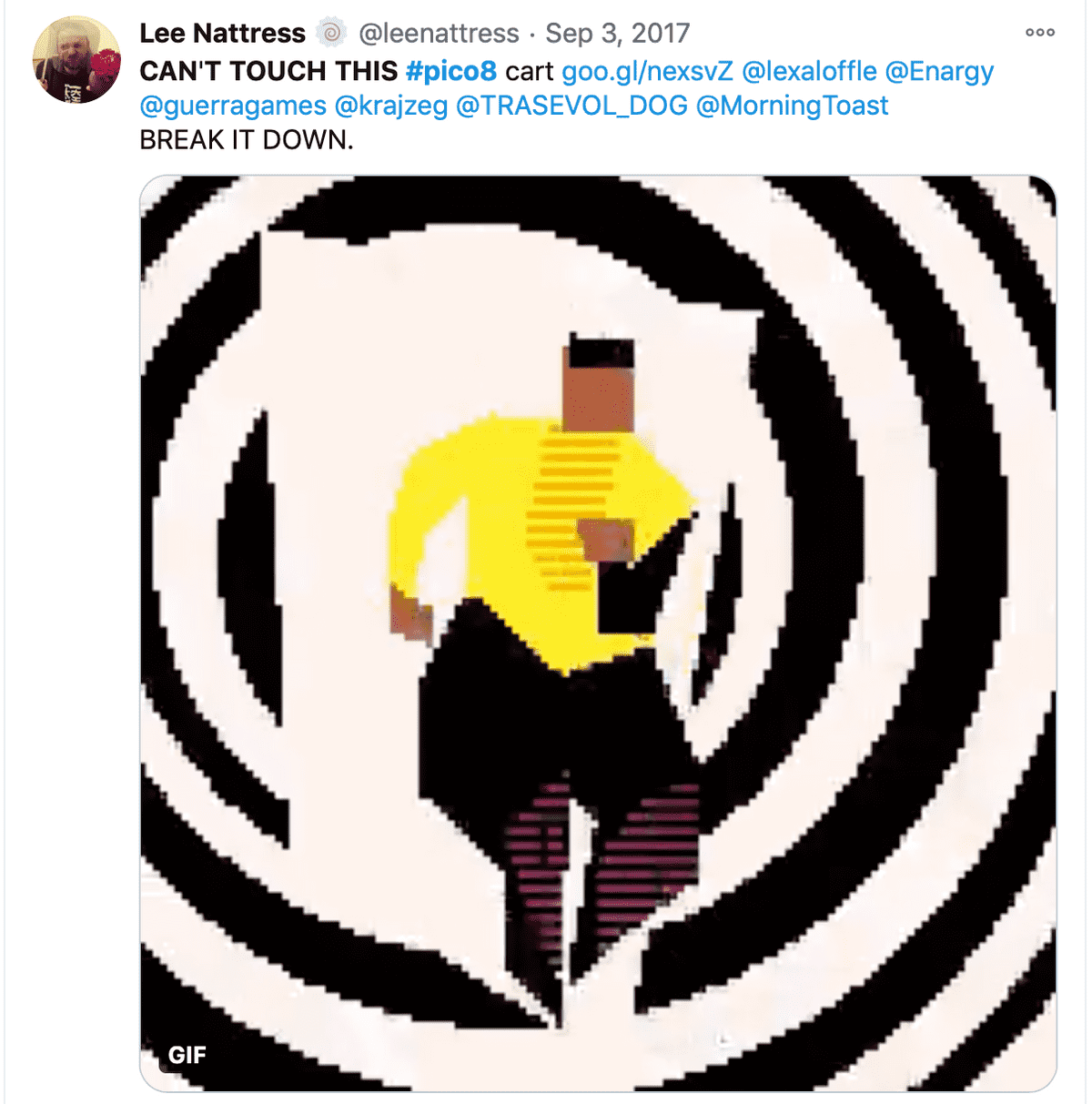How do I craft a GIF that people love?
Picture this.
You’re working on a little PICO-8 game in your spare time.
“It’s gonna be awesome”, you think to yourself.
“It’s gonna be this little RPG, with swords, and dancing, and dogs that you can pet, and a whole big world for players to explore.”
Make no mistake: you pour your heart and soul into the game. It is indeed as awesome as you.
So the time comes when you finally have something to show.
And since you’re using PICO-8 – which has a handy GIF recording feature – you snap a quick GIF of your game, post it on Twitter's #pico8 hashtag, and eagerly wait for people to like your post.
And… nothing.
You wait and wait. “Maybe people are sleeping, zep lives in Japan after all.” They’ll like and retweet soon enough.
And still. Nothing.
The day goes by. Your GIF gets a few likes – maybe 4 or 5 – but not the outsized response that you were expecting.
(Oh, I didn't want to say it, but one of the likes are from your mom. Gee, thanks Mom.)At this point, you feel terrible. “I spent so much time on my game, why don't people like it?”
If you've ever done the above and felt this way, don't feel bad.
Because in the rest of this post, I discuss a few brief tips on how to craft better GIFs. So you can give your game the attention it deserves.
Let's jump right in.
1. You have 2 seconds.
The first thing to consider is that people on Twitter (or any social media platform) are idly swiping for something to catch their eye.
They might be on their lunch break. They might be at the bus stop. Or maybe they’re just bored.
In any case, they’re seeking stimulation.
As such, you have a very small window of opportunity to catch their attention. Because it only takes 1 to 2 seconds to swipe down to the next thing.
So what do you do to ensure that your GIF – the GIF of the game that you worked so hard on – grabs their attention?
2. You distill your GIF down to 2 words.
Every successful GIF has a single verb: an essential motion, or moving thing that it’s trying to depict.
Take a moment to browse recent top PICO-8 tweets to see what I mean. You might see descriptions, both explicit and implicit:
- “chain ripples”
- “thrust n’ fire”
- “title screen”
We focus on the motion because it taps into our brain's innate ability to focus on movement. (Presumably, our ancestors needed to instantly detect movement to avoid getting mauled by hyenas.)

Oh, this GIF wobbles by the way. I took a static screenshot to avoid grabbing your attention. :D
And distilling that motion into 2 words makes the animation readable. It anchors the viewer’s mind while viewing the GIF, and makes the viewer say:
“Hey, that really is a wobble cat. Heheh, lemme give that a like.”
Much like a game of Pictionary, you get a dopamine rush from identifying someone's GIF correctly.
3. You find your GIF's hook.
Once you’ve established your GIF’s 2 words, it’s important to establish the GIF’s hook.
That is, you've gotten the viewer's attention through motion. Now you need to make them stay. Remember – it takes less than a second of effort to swipe to the next thing!
Although not exhaustive, here are 5 ways to keep a viewer's attention.
- Juiciness. The prolific Munro Hoberman crafts many of his GIFs with a distinctive shimmering effect:
- Education. You might explain a coding technique in GIF form, such as in this tweet about subpixel rendering:
- Humor. You might want to make the viewer laugh, such as in this tweet from Lee Nattress:
- Novelty. You could show the viewer something they've never seen before, such as this GIF about making breakfast:
- And lastly, anything 3D is a guaranteed hook. Developers such as Ben Jones, Johan Peitz, and Frederic Souchu dazzle viewers with their sheer virtuosity in 3D coding:
(Seriously, if you want to hook viewers' attention, 3D is a foolproof way to do so.)
Remember the one-two hook.
So when creating a GIF to communicate something you worked on, remember these 2 things:
- Find your GIF's essential motion, and
- Find the hook. The thing that will hold people's attention, whether it be juiciness, education, humor, novelty, or 3D. Or wobbling. :D
Start posting GIFs under the #pico8 hashtag on Twitter.
Learn what people find appealing, and use that as feedback to make your game something that people love.







